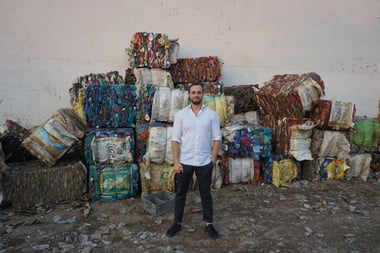
Josh Jackman
Josh has written about green technology and climate change for the past five years. His data-driven work has featured in the Financial Times, The i, The Independent, The Telegraph, The Times, The Sun, and the Daily Express, as well as UN and WHO reports. He’s also been interviewed by BBC One, BBC Radio 4, and BBC Radio 5 about everything from renewable energy to space travel's emissions, so if you’ve got an eco-friendly question, he’s your best bet.
Plastics release 1.8 billion tonnes of greenhouse gases per year, which equates to 3.4% of the world’s emissions.
That means plastic has a bigger effect on climate change every year than all aviation and shipping.
We can’t effectively address climate change without massively reducing the amount of plastic we create, use, and throw away.
Here are the main ways in which our addiction to plastic contributes to climate change, and the actions we can all take to help solve this issue.
What’s on this page?
01 | Key takeaways02 | How does plastic affect climate change?
03 | How do we stop plastic pollution from contributing to climate change?
04 | Summary
05 | FAQs
Key takeaways
- Plastic releases more emissions per year than planes and shipping
- 93% of plastics are made with fossil fuels
- 14% of all extracted oil goes towards making plastic
- Humans throw away 353 million tonnes of plastic per year
- That figure has doubled since 2000
- Plastic kills a million seabirds and 100,000 marine mammals per year
- Plastics release methane as they break down, which causes global heating
- Global heating causes plastics to degrade quicker
How does plastic affect climate change?
Plastic affects climate change in a number of awful ways.
From the emissions released during its production, distribution, and disposal to the toxic impact it has on wildlife and the environment, plastic is disastrous for the climate.
Here are all the main ways plastic affects climate change.
It leads to oil extraction
14% of all oil extracted each year goes towards making plastic.
That’s one in every seven barrels of oil, taken from deep in the Earth at great cost to our planet, for the high-emission process of making plastic. And once it’s over, we’re left with an unsustainable material that’s become an omnipresent blight on this planet.
Oil production has increased by around 40% since 1990, according to Enerdata, leading to the 629 million tonnes of oil used per year to produce plastic – and that number is only going up.
With countries and communities moving away from using oil as a fuel for heating and electricity, energy megacorporations like Shell and ExxonMobil are increasingly using their oil to produce plastic.
It’s time to cut them off from another destructive source of income.
Production is pollution-heavy
60% of plastic emissions occur during the production process, according to the Organisation for Economic Co-operation and Development (OECD).
Plastic manufacturing is booming in places like China – where 32% of all plastic is made – Canada, Mexico, and the US, which combine to create 18% of the total, and Europe, which makes up another 15%, according to global data collected by Plastic Europe.
For these mostly wealthy nations, plastic is a valuable industry – but it also causes localized pollution that’s damaging the environment and lungs of everyone in these countries.
After all, 93% of plastics are made with fossil fuels, with just 6% made with recycled plastics, according to the OECD.
The rest are biobased, meaning they’re made from organic substances like wheat, corn, and sugarcane. This cool concept deserves more funding – but right now, biobased plastics are only sometimes made from 100% biomass, meaning they’re not always biodegradable.
The plastic industry is one of the most polluting, per product, in the world – and it’s not changing any time soon.
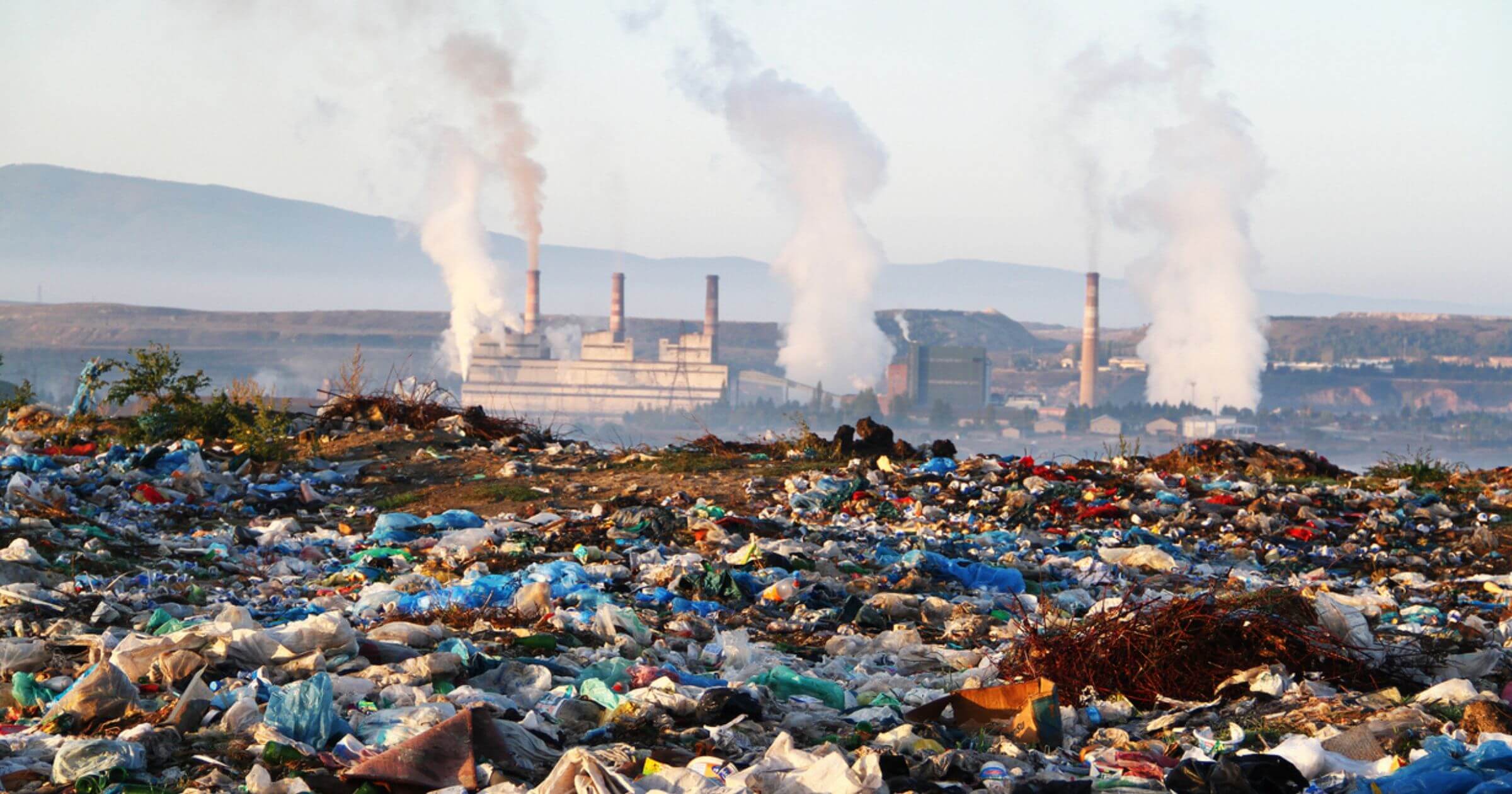
Global distribution means global emissions
Between creation and disposal, plastic continues to affect the climate – in fact, 29% of emissions occur in the distribution stage, according to the OECD.
People’s apparently insatiable demand for plastic requires packaging, logistics, and transportation – most of which is powered by fossil fuels, and therefore exacerbates climate change.
And guess which industry is responsible for the most plastic emissions? That’s right – packaging.
The problem is cyclical: more plastic means more packaging, which is also made of plastic – and factories producing plastic packaging will often transport it in different plastic packaging.
Plastic disposal releases emissions and toxic chemicals
Just 9% of global plastic waste is recycled, according to the OECD. In the US, that figure drops to just 4%.
19% of plastic in the US is incinerated, which is incredibly polluting. When this is burned for energy, it can be polluting if it isn't done in the right way – that's why we use any fuel created through co-processing towards the cement industry. By doing this, we can reduce the emissions in an already carbon-intensive industry.
4% of the US’s plastic is mismanaged or goes uncollected, which is obviously sub-optimal, and the remaining 73% is sent to a landfill.
Landfills in the US receive 27 million tonnes of plastic per year, according to the Environmental Protection Agency (EPA), where the plastic degrades over centuries, releasing toxic chemicals as they do.
The seven most frequently used plastics release methane and ethylene as they break down, according to a Hawaii University study – and methane is at least 84 times worse for the climate than CO2 over a 20-year period.
The surrounding soil and organisms can suffer irreversible effects as a result, with animals in the area either dying or being mutated simply because they drank from local water sources.
11% of plastic emissions happen during the different disposal processes – and that’s only counting the coherent methods. All too commonly, plastic is simply dumped, with dire consequences.
Waste mismanagement has resulted in more than 22 million tonnes of plastic filtering into all major ocean basins, beaches, lakes, rivers, and terrestrial environments – including the Arctic and Antarctic.
Microplastics exist in virtually every part of the Earth, in the deepest, darkest, most remote locations, as well as in the fish we eat.
In 2018, China’s government completely banned the import of plastic waste, leading to panic among countries like the UK and US, which send millions of tonnes abroad every year.
Much of the apparently recyclable waste sent to China was burned instead, and with countries like Malaysia and Turkey now struggling to deal with the sudden upsurge in imported trash, there’s no solution in sight.
Atmospheric microplastics
How do clouds form? Water condenses on small particles in the air, such as dust, soot, sand – or, in modern times, microplastics.
These microplastics start their journey on roads, farms, and waste sources from run-of-the-mill landfills to the Great Pacific Garbage Patch.
They encourage the formation of clouds, drift for a while, then rain down, in some cases thousands of miles away from where they started.
This global spread means humans and animals are breathing in microplastics on a regular basis, all while scientists struggle to figure out what it means for our health.
Microplastics being in the air also results in more clouds – and though it’s not yet clear whether this is heating or cooling the planet, it’s likely to result in more extreme weather events.
Clouds polluted with microplastics usually take longer to burst, but when they rain, they pour – much more heavily than other clouds, according to the latest research.
Plastic kills animals and plants
Plastic is responsible for the deaths of more than a million seabirds and 100,000 marine mammals per year, according to UNESCO.
The spread of plastic throughout the natural world has now negatively affected around 700 species, including many endangered animals.
90% of all seabirds have ingested plastic, according to a recent study – everything from glow sticks and cigarette lighters to balloons, model cars, and toys.
Many birds see plastic shards and think they’re fish eggs – only to find out the truth when it’s too late. The study outlines “physical and toxicological impacts from plastic ingestion,” including gut obstruction and death.
Sea turtles are one of the other most affected animals – 52% of them across the world have consumed plastic, according to Queensland University research.
For more than one in five of these unlucky creatures, it’s fatal. For the rest, it can inhibit growth and severely hinder reproduction.
This is exacerbating and accelerating the deadly trends caused by climate change, which has already placed a million species at risk.
Plastic also makes every part of life more difficult for animals, from building their homes to breeding and moving around.
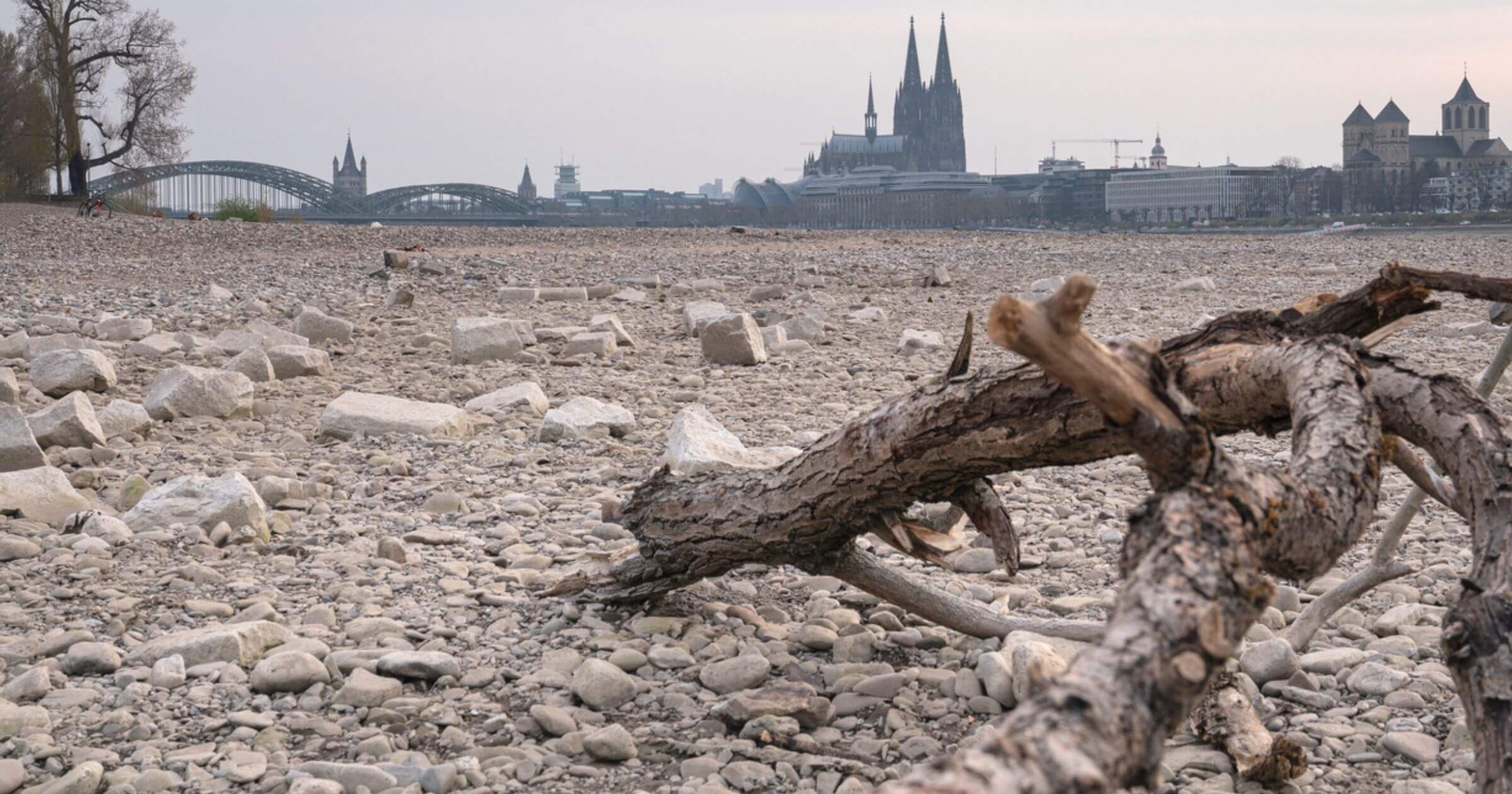
How do we stop plastic pollution from contributing to climate change?
We can stop plastic pollution from contributing to climate change by cutting down on our plastic consumption and disposal, and by recycling more.
We have to create more environmentally friendly options for plastic that can’t be recycled, and of course, we must clean up the plastic we’ve already spread throughout every part of our world.
Reduce plastic consumption
The best way to stop plastic pollution from worsening the effects of climate change is to reduce plastic waste – and the main way to achieve that is to cut your plastic consumption.
The average person in the US throws away 221 kg of plastic each year, which typically releases nearly a tonne of CO2 emissions.
Try to limit your plastic purchases to goods you intend to keep around for years and years, to fight the culture of single-use plastic.
Start by swapping out your plastic bags for fabric tote bags, avoiding buying plastic bottles of water, and relying on reusable coffee cup instead of disposable ones.
It’s important to resist the urge to buy plastic products that won’t stand the test of time – especially on Black Friday.
It’s difficult to cut your usage in fields like cosmetics, but the environmental impact of the beauty industry makes it a must.
Plastic packaging consumption has remained stable at around 2.2 million tonnes per year since 2016, according to the Waste & Resources Action Programme (WRAP) charity – showing we need a cultural, economic, and legal shift around how we see plastic.
Create a circular economy
The ideal endpoint of this shift would be a circular economy – that is, a sustainable system in which products and their constituent parts are reused as much as possible.
This type of economy is constructed with the environment and climate in mind, and is intended to limit the negative effects of humans on the planet to the bare minimum.
Goods are shared, lent, and given away to others, based on need – and when they’re damaged, the emphasis is on repairing or recycling them, rather than trashing them.
Clean up existing plastic pollution
Cutting down on the plastic waste we create is vital, but the amount of trash polluting every part of our planet is already stratospheric.
78 million tonnes of plastic is mismanaged each year, meaning it inevitably ends up littering our landscapes and oceans.
If we don’t remove this trash and dispose of it properly, it will continue to harm and kill animals, plants, and humans – and this is where CleanHub comes in.
If you want to reduce your business’s plastic footprint, we can help. Just get in touch with our in-house team. Once we’ve received your details, we can arrange a call to discuss which plastic recovery plan will suit your company’s needs best.
Recycle plastic waste
Globally, we produce 353 million tonnes of plastic waste per year – a figure that has doubled since 2000 – and as previously stated, we only recycle 9% of it.
This figure must increase for us to stop plastic from having an even bigger effect on climate change.
Nations around the world have to ramp up their recycling capacity by building more plastic processing facilities, especially since other countries like China and Turkey are increasingly refusing to take foreign waste.
Find greener ways to deal with non-recyclable waste
This is perhaps the biggest plastic problem facing humanity: there are very few good options when it comes to plastic disposal.
Only a limited amount of plastic can actually be recycled, and the most common alternatives – landfills and incinerators – cause emissions and pollution.
To try to solve this problem, CleanHub uses co-processing, which involves using plastic to fuel cement production.
By burning the waste at extremely high temperatures, we succeed in drastically reducing the toxic impact of plastics and cutting the emissions in an extremely carbon-intensive industry.
We’re also monitoring scientific developments focused on changing the chemical structure of plastic items so they can be used to make new products, and using plastic in construction materials.
However, more research is needed to turn either of these potentially revolutionary ideas into viable options.
Summary
It’s vital that we solve the plastic problem before the worst effects of climate change hit.
As our world continues to heat up, plastic waste will break apart more quickly, which means it’ll release toxic chemicals into the ground and air at a faster pace.
Want to find out how your brand can reduce plastic waste? Check out our guide on Capturing the Conscious Consumer, where you can explore the benefits of introducing a sustainable strategy, advice on how to do it effectively, and ways CleanHub can help you with the transition.
FAQs
How does plastic damage the environment?
Plastic damages the environment by making habitats less livable, disrupting natural ecosystems, and making it harder for animal and plant species to adapt to climate change.
Plastic is also directly responsible for killing more than a million seabirds and 100,000 marine mammals per year. It’s affected 700 species, including endangered ones.
How much global warming is from plastic?
3.4% of global greenhouse gases released each year come from plastic, as a result of its 1.8 billion tonnes of annual emissions.
To put it another way, one in every 29 tonnes of emissions that exacerbate global warming come from plastic – more than flights and shipping.
How does plastic not help climate change?
Plastic makes climate change worse because it directly leads to oil extraction, production processes powered by fossil fuels, and pollution-heavy distribution operations.
And since only 9% of all plastic is recycled, the great majority is either dumped in a landfill or incinerated in damaging ways, which disperses toxic chemicals into the soil, water, and air.

.webp)
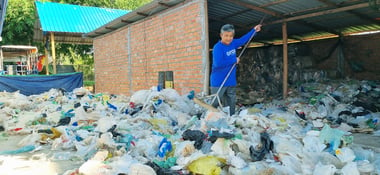
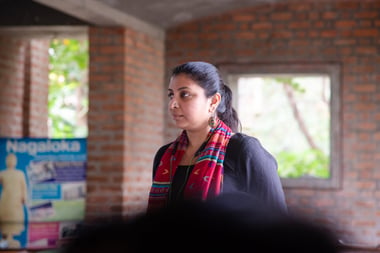
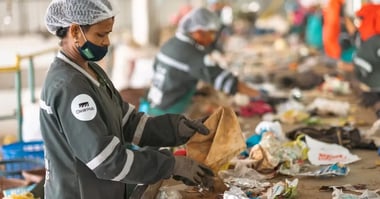
.webp?width=380&name=Sarah-Jeanne-Royer%20(1).webp)


.jpg?width=380&name=drone-2021-12-06-10h31m38s177%20(1).jpg)
-2.png?width=380&name=Untitled%20design%20(2)-2.png)

